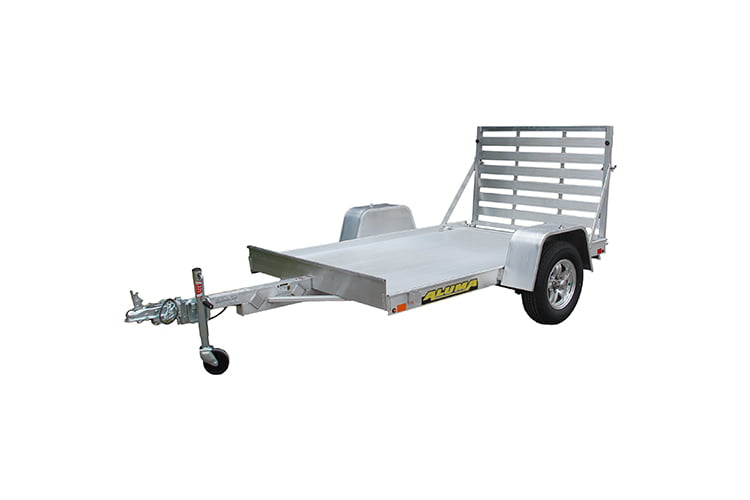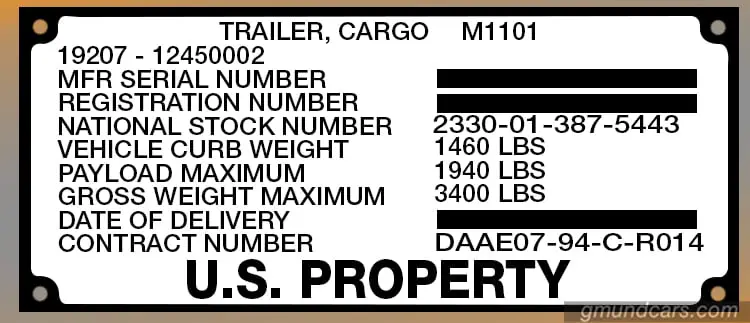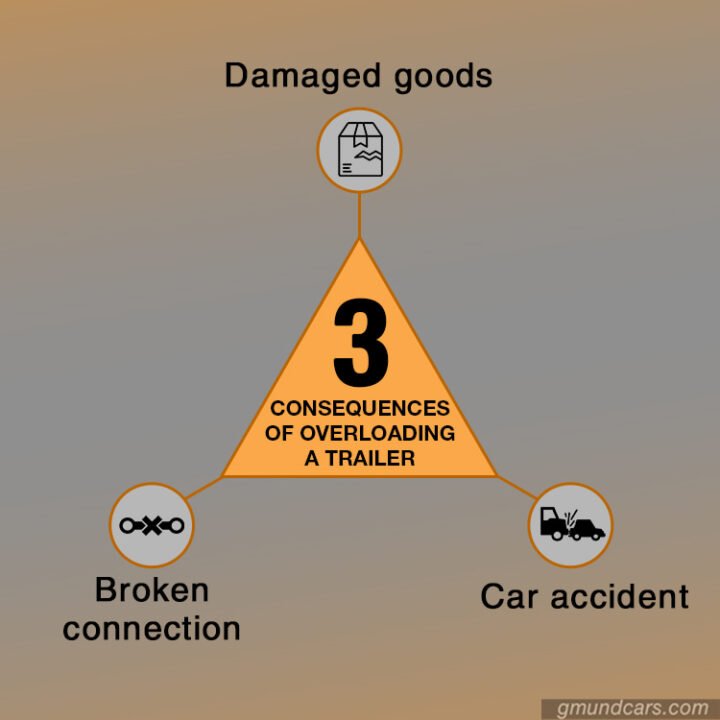It’s essential to consider the weight limit of a single axle trailer like any other vehicle safety aspect. It is crucial since it can significantly impact the safety, performance, and insurance of your trailer.
When carrying goods from one location, you must check the weight limit for a single axle trailer; this will help determine the balance. In cases where a bull chassis is in use, you may have more leeway.
Most states classify the violation of the overweight limit as a punishable offense that can lead to community service and periods of probation. As such, drivers need to know and understand the weight limit of single axles before accepting a load.
In this article, we will explain everything you need to know about the single axle trailer weight limit.

Understanding Weight Capacity Trailer
To know the weight you are allowed to carry with a trailer can sometimes be confusing. Still, the major thing to consider is the trailer axle’s load rating.
The diameter of trailer axles determines their rating and contributes to their overall strength. The more load an axle can carry, the thicker it is. From research, the capacity of loads a single axle can carry ranges between 1,000 – 10,000 pounds.
Therefore, understanding your trailer’s weight capacity will allow you to determine the number of items it can transport and how to balance the trailer’s load.
Why Is The Axle Weight Limit Important?
Axle weight limit helps to measure the weight of a vehicle and know the load limit for your trailer. It is important because of the reasons explained below:
Avoid Vehicle Deterioration
Overloading your vehicle can also result in its damage. Many trailer vehicle components are extremely durable and have high-stress tolerances. However, axles, driveshafts, tires, and many other parts can be damaged due to overloading if you don’t check the weight distribution regularly.
Prevent Financial Penalties
Exceeding the specified axle weight limit is a punishable offense that results in significant financial penalties depending on the circumstances. As a result, it is critical to ensure that vehicles adhere to their predefined maximum weights to avoid penalties.
Keep Drivers Safe
Overwhelming weight on one side of the vehicle will naturally result in an imbalanced load, and in extreme cases, this can prevent the wheels from making contact with the ground at all.
Due to hampered breaking capabilities and decreased stability, vehicles can easily become more vulnerable to crashes even with a less extreme distribution.
Reduce Cost
As the vehicle’s weight increases, the engine will need more fuel to move at the same speed, making it less economical. Also, exceeding your vehicle’s maximum weight limits may result in the cancellation of your insurance policy.
Minimize Road Deterioration
One aspect of designing road structures is their pressure resistance. However, trailers are more dangerous on the road because of their weight. As a result, avoiding unbalanced axle weight on all vehicles is important for preventing road damage.
Read more: Tandem Vs. Single Axle Trailer: What Are The Differences?
What Is The Weight Limit For A Single Axle Trailer?
According to federal law, single axles’ maximum gross capacity limit is 20,000 pounds. In addition, the axles should have a minimum spacing of 40 inches apart and a maximum of 96 inches apart.

Source: alumaklm.com
As a result, if you want to calculate the axle capacity of your trailer, subtract the empty weight of your trailer from the weight rating listed. This will help you determine the weight capacity and strength of trailers.
Exceeding the weight limit for a single axle trailer could break the axle while on the road.
How To Find The Weight Limit Of A Single Axle Trailer
Generally, there are two basic ways to ascertain the weight limit of your single axle trailer.
Trailer’s Data Plate
With this method, you will find the data plate on the single axle trailer. It is usually attached to the trailer’s tongue or on the frame. You should see an entry that lists “axle capacity”. That is your trailer’s weight limit.

Using a scale, weigh the goods for the trailer. This will help you make sure the goods don’t go above the maximum load weight of the trailer, as seen on the entry.
Axle Diameter
The other method is to measure the trailer axle’s diameter. Here are the basic axle diameter measurements:
- 1.5-inch diameter axle — up to 1,000 pounds of load
- 1.75-inch diameter — up to 2,000 pounds of load
- 2.375-inch diameter — up to 3,500 pounds of load
- 3-inch diameter — up to 6,000 pounds of load
- 3.5-inch diameter — up to 8,000 pounds of load
- 4-inch diameter — up to 9,000 pounds of load
- 5-inch diameter — up to 10,000 pounds of load
Note: If the trailer has several axles, you will have to multiply it by each axle load capacity.
Read more: 10 Best Aftermarket CV Axles With $100 [2022 Review & Buying Guide]
What Will Happen If You Overload A Trailer?
It is best practice to know the limits of your trailer before pulling out of the driveway, failure to do this results to:

Damaged Goods
An inherent danger of taking too much load is that transporting goods may get damaged. When there are many goods in the trailer, they will exceed the vehicle’s safe perimeter, making them hang on the edges or even fall out on the road.
However, because of the busy highway and other vehicle speeds, you most certainly can’t go back to pick those items, and once they are gone, you might have to replace the items.
If your items include materials like glass, they can endanger other people’s vehicles when they fall out on the road.
Car Accident
Apart from the goods damage, overloading a trailer might cause a severe accident on the driveway.
The additional weight at the back will press the rear bumper, reducing the vehicle’s front-end pressure. The contact patch of the car is reduced when the front wheel is slightly raised. It will make you lose control of your vehicle’s steering and make it impossible to apply the brake.
With this, you and other motorists are in grave danger.
Broken Connection
You must understand the connection that a trailer and other vehicles have because it is an essential aspect of a towing process. When traveling, you risk ending the connection and losing your cargo if you travel with excess weight in the trailer.
Read more: Broken Axle: Signs And Causes
FAQs
How much weight can a 6×12 single axle trailer hold?
A 6×12 enclosed single axle trailer weighs 1,200 pounds empty. In comparison, an empty 6×12 tandem axle weighs 1,800 pounds. When determining how much your vehicle can safely haul, that additional 600 pounds in a trailer with the same height and width is critical.
How much weight can you put on a 5×8 trailer?
The 5×8 enclosed trailer can haul up to 1,800 lbs and hold a small bedroom! It has a soft ride, multiple ties down, lockable doors, and rub rails that help to protect your belongings.
How much weight can a single axle 5×10 trailer hold?
A 5ft x 10ft trailer is perfect for towing cargo up to 2,210 lb capacity. This trailer uses a 2″ coupler system for a two-ball hitch. It offers unique longevity and dependability in a trailer this size.
How much weight can a 3500 lb axle handle?
A 3500lb axle is designed to hold 3500lbs. The axles support the body of a trailer, its cargo’s weight, and the weight of the trailer’s frame.
Conclusion
Before accepting the load, drivers and dispatchers must understand truck loading and weight limits for axles and axle groups.
Although the weights of these loads vary by state, the total vehicle gross weight of 20,000 pounds per axle is an essential factor that contributes to determining the maximum allowed weight.